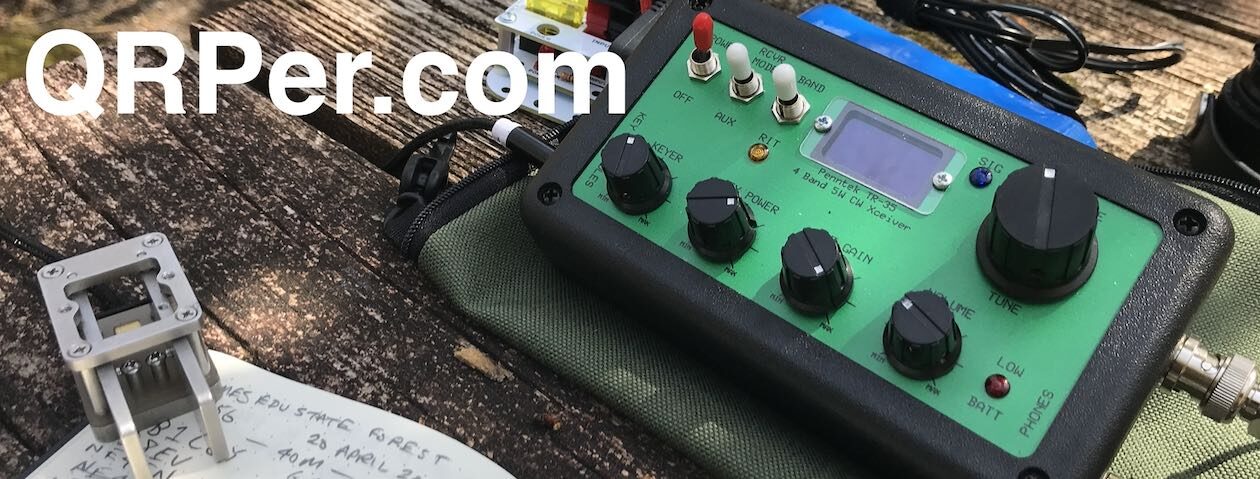Many thanks to Conrad (N2YCH) who shares the following field report:
QRP POTA & SOTA on Killington Peak, Vermont
By Conrad Trautmann (N2YCH)
Peter (K1PCN) and I decided to travel from Connecticut to Vermont to view the solar eclipse that occurred on April 8, 2024.
We got an early start on Sunday morning April 7th to drive to Rutland, Vermont where we stayed overnight. This positioned us well for a short drive the next morning to drive North towards Burlington, where we’d be under the path of totality.
Knowing we’d have some extra time on our hands on Sunday afternoon, Peter planned two park activations. Our first stop was Calvin Coolidge State Park (POTA US-5541 & SOTA W1/GM-002), which encompasses Killington Peak and is also a two-fer with the Appalachian Trail (US-4556). We also activated Gifford Woods State Park (US-3115), which isn’t too far from Killington.
For the trip up the mountain, we “walked-on” the K1 Gondola ski lift to get up most of the way.
From the top of the ski lift, we hiked another 360 feet, up 100 feet in elevation, in the snow, to get to the actual summit at approximately 4,230’ above sea level.

Our kits needed to be self-contained and not too heavy for the hike. Peter packed his Icom IC-705 along with a fiberglass mast and an end-fed half wave wire antenna to do a sideband activation. I brought my Elecraft KX-3, 3Ah Bioenno LifPo battery, and the Elecraft AX-1 antenna to do a digital activation. We both activated on 20 meters and were far enough apart that we didn’t interfere with one another. We also tried 17 meters.
Conrad, N2YCH’s equipment list
- Mindshift 18L Camera Bag Backpack for radio, cables, battery and computer
- Elecraft KX3 transciever
- Elecraft AX1 antenna
- AXT1 Tripod Adapter
- Manfrotto PIXI Mini Tripod
- Buddipole MILSPEC Coaxial Cable
- Bioenno 12V, 3Ah LFP Battery (PVC, BLF-1203AB)
- Samsung Galaxy Book Flex2 Alpha 2 in 1 Laptop with Outdoor mode
- XGGCOMMS USB Digimode-4 Interface for Elecraft KX3
- Kenwood TH-D72 VHF/UHF transceiver
Peter, K1PCN’s Equipment List
- Bioenno 12V, 3Ah LFP Battery (PVC, BLF-1203AB)
- Icom IC-705 HF transceiver
- SOTAbeams Carbon 6m ultralite mast
- Antenna: K6ARK 66′ EFHW 49:1 (built from kit) no coax
- Bioenno 12V, 3Ah LFP Battery (PVC, BLF-1203AB)
- Baofeng UV-5R VHF/UHF transceiver
- Backpack: 33l generic military style
After the hike up, we surveyed the area to see where the best spots would be for us to set up. Peter took one side of the summit while I set up on an exposed rock so I wouldn’t be sitting in the snow. Peter wore his ski pants…I, on the other hand, ended up with wet jeans by the end. I’ll re-think my attire the next time I do this. I got the radio equipment right but not the clothing selection. Priorities!



In addition to the HF radios, we both brought our VHF/UHF handhelds to make contact with each other as well as anyone who might be nearby. Peter brought a Baofeng UV-5R and I brought a Kenwood TH-D72. I was lucky enough to complete a QSO with someone who was mobile and driving along US Route 89, which at its closest point to Killington Peak is a solid 20 miles away. I verified that via email with the other ham after the fact. Continue reading SOTA, POTA, and a Total Solar Eclipse Adventure: Conrad and Peter Pack It In!
















































